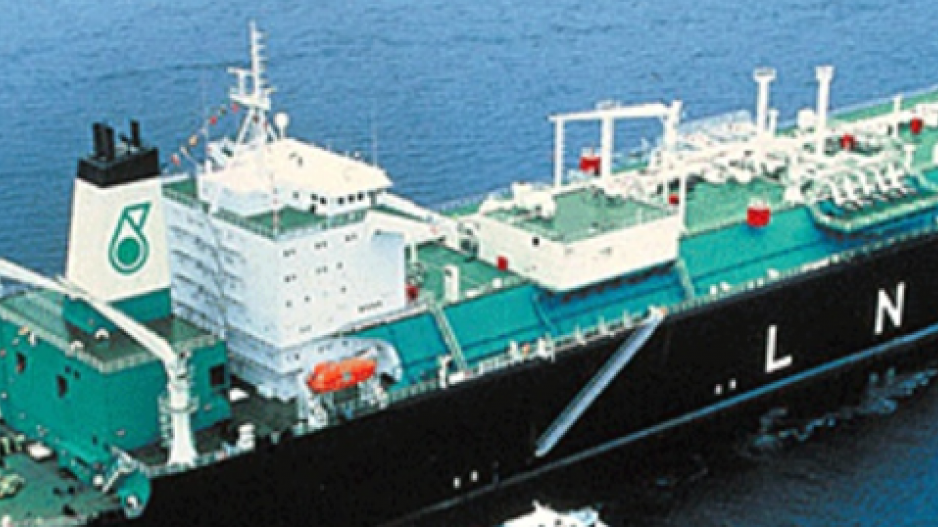Malaysian oil giant Petronas got one step closer to making a final investment decision for its proposed Pacific NorthWest LNG project when the provincial government issued three Environmental Assessment Certificates earlier this week.
The moves by Environment Minister Mary Polak and Natural Gas Development Minister Rich Coleman earned virtually universal praise from Northeast British Columbia’s politicians.
The Westcoast Connector pipeline, the Pacific NorthWest LNG export facility in Prince Rupert and the Prince Rupert Gas Transmission pipeline were all cleared by Environment Ministry on Tuesday.
Prince George-Peace River MP Bob Zimmer, one of the Northeast’s representatives to Ottawa, said he expected Malaysian state-owned oil giant Petronas to make its final investment decision before the end of the year.
If that were to happen, construction would begin in earnest on pipeline and liquefaction facilities, paving the way for a major expansion in natural gas production north of Dawson Creek, where Petronas subsidiary Progress Energy’s assets are concentrated.
There are legally binding conditions attached to each certificate, ensuring that these projects are constructed and operated within certain guidelines. Some of these include ensuring First Nations concerns and wildlife populations are taken into consideration.
Still, getting these certificates doesn’t mean the projects have leaped all their regulatory hurdles.
To proceed, they still need to get permits from other levels of government, including an environmental assessment from the federal government in the case of the Pacific NorthWest LNG export facility.
“We look forward to more decisions Federally – we still have an assessment to complete – and look forward to a favourable output,” said Zimmer, who added that he spoke with industry contacts on November 26, after the certificates were issued, and they were “quite pleased.”
Zimmer touted the cleanliness of the energy that would be used in China if the LNG boom goes forward in Canada, a market in which our country has a transportation advantage over the United States. The MP said that while it will take about a week, give or take, to ship gas from Prince Rupert to China, it could take more than three times that long from the Pacific coast of the United States.
“That alone is a good economic benefit,” he said.
“We’re looking at an industry that has the potential of impacting Canada to the tune of $455 billion over 20 years. It’s absolutely massive as an industry.”
Richard Neufeld, former Peace River North MLA and now chair of the Energy, The Environment and Natural Resources Committee in the Canadian Senate, said there’s a definite international demand that B.C. is poised to supply.
“I’m a great believer in it – I think it’s going to happen,” he said. “There’s such a thirst out there for LNG, for replacing coal-fired power, and even just getting power generation to many places that don’t have any, or replacing a lot of the nuclear.”
Neufeld said that once the first investment decision comes down, he believes the industry will start to pick up speed. “It’ll give everybody some momentum,” he said.
“This LNG, for us in British Columbia, could be as big as the oil sands are in Alberta.”
Mike Bernier, Peace River South MLA, said the stakes were high for all of northeastern B.C.
“The spin-off means not only employment, but when you look at the investment opportunities in the area that are happening around businesses and hotels, all of those things are going to slow down, if not cease, if we don’t have LNG,” he said.
Bernier’s counterpart, current Peace River North MLA Pat Pimm, agreed that the industry was incredibly important, stressing that patience would pay off, as the process is moving.
“There are a lot of folks in my region that have been saying, ‘We’re going way too slow, these projects are not going ahead,’ that sort of thing,” he said. “This shows that the projects are moving ahead, we’re getting the hurdles out of the way and we’re making it so these companies can make their final investment decisions and get moving forward with these projects.”
With regard to the conditions placed on the projects, Pimm added that he saw flexibility from industry.
“The route [of the pipeline] was changed to accommodate the consultations,” he said, pointing to concerns surrounding wildlife.
Pimm also said he’d like to see First Nations get more involved on his level of government, rather than dealing primarily with ministers.
“Sometimes, I find that’s a little frustrating, because I’d like to help out in some of these situations, and more often than not they don’t give me the opportunity to help out,” he said.
It is expected that the LNG tax plan that was announced several weeks ago would be passed into law in the B.C. Legislature by the end of the day Wednesday.
“Now we’re just waiting for the final investment decisions, and that’ll basically be a green light for activity to ramp up in our region,” said Pimm. “Petronas is certainly the one that’s in the leading position at this point in time, so hopefully we see something from them in the very near future.”
Petronas’ project is the Pacific NorthWest LNG export facility, which would be located on Lelu Island and the Port of Prince Rupert. The $11 billion facility is expected to create 650 full-time jobs, the B.C. government said in a release.
Meanwhile, the Westcoast Connector Gas Transmission pipeline involves building a $7.5 billion, 860-kilometre pipeline running from Cypress to a proposed LNG terminal near Prince Rupert, with the potential to build an identical twin down the road.
Finally, the Prince Rupert Gas Transmission pipeline would run from Hudson’s Hope to the Pacific NorthWest LNG facility. It’s expected to cost $5 billion, providing 23 full-time jobs over 40 years.
These three are just a fraction of the well more than a dozen projects that are proposed in B.C., as the province joins the race to export cheap LNG to foreign markets.




